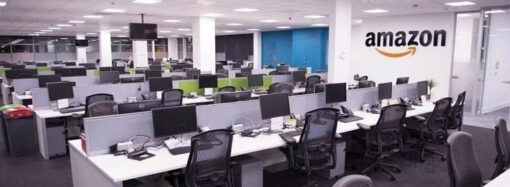As we progress through 2024, the flexible workspace sector is poised for substantial growth. Key trends include strategic expansion, occupier-centric models, dynamic pricing, and global interest. Industry expert Paras Arora’s insights reveal how these changes will redefine the workspace landscape.
The global pandemic has forever changed the professional world, propelling flexible, hybrid, and remote work arrangements to the forefront.
As we progress through the 2024 financial year, the flexible workspace sector is poised for substantial growth, with rental rates expected to rise by 10-15%.
Here are some predictions for the upcoming changes and trends that will redefine the workspace industry.
The Year of Strategic Expansion
2024 will be a landmark year for the flexible workspace sector, marked by a notable increase in workspace supply across Tier 1, 2, and 3 cities. The strategic rollout of enterprise and managed offices in commercial hotspots like Mumbai, Bangalore, Pune, Hyderabad, and Delhi will drive this expansion. The market’s confidence is evident, with coworking and managed office operators investing heavily in speculative assets based on solid occupier demand data.
Qdesq’s analytics reveal a promising future, showing a 12% growth in centres over the past year and projecting a 25% inventory increase by the end of FY 2024. This expansion is not limited to metros; significant growth is also expected in non-metropolitan areas. About 70% of domestic and global operators plan to expand their footprints, focusing on larger markets and economies of scale by leasing substantial standalone campuses to various occupants.
Leading industry players like Skootr, Awfis, Smartworks, and others spearhead this transformation, showcasing scalable and diversified workspace solutions. The broad market confidence suggests a vibrant future for flexible workspaces, reflecting a robust demand for versatile and adaptable office environments.
Occupier-Centric Trends
In 2024, the workspace sector will increasingly focus on occupiers’ preferences and needs, prioritising better facilities, compliant assets, and flexible lease agreements. Companies will favour shorter lease terms, typically 36 months or less, reflecting a preference for spaces that are either fully fitted out or privately managed. This allows businesses to customise their work environments to suit their specific needs.
The hybrid workspace model will gain more traction, catering to remote and on-site work arrangements. This approach is expected to boost tenant retention and satisfaction, with coworking spaces playing a pivotal role. Key metrics like occupier retention and overall satisfaction rates will become crucial indicators of workspace providers’ success, highlighting their ability to meet evolving occupier demands.
In essence, the workspace industry will become more user-centric, focusing on providing spaces that are not only functional but also adaptable to the changing needs of modern businesses. This shift will underscore the importance of flexibility and customisation in the workspace market.
Flex Pricing Dynamics
The financial landscape of the flexible workspace market is set for an adjustment, with an anticipated 10-15% increase in per-desk costs. This price hike is driven by the sector’s aim to enhance profitability and return on investment. Factors contributing to this increase include rising demand from companies enforcing return-to-office policies and the value placed on strategic locations, brand visibility, design aesthetics, accessibility, security features, and cutting-edge technological infrastructure.
The pricing model will become more nuanced, differentiating between various grades of spaces and their locations, such as Peripheral Business Districts (PBD) and Central Business Districts (CBD). Pricing strategies will be designed to align with the inherent value provided by these different locations and facility standards, ensuring that costs reflect the comprehensive benefits and amenities offered.
This dynamic pricing approach will help workspace providers maintain a competitive edge while offering tailored solutions that meet businesses’ diverse needs. It will also enable a more transparent and value-driven market, where pricing is directly linked to the quality and location of the workspace.
Growth Story and Global Interest
India’s economic landscape offers fertile ground for the flexible workspace market, driven by a robust growth rate projected at 7.2%. This growth cements India’s position within the APAC region and attracts global players to the Indian market. The flexible workspace sector in India is expected to thrive, with international operators exploring various entry strategies, including organic growth, acquisitions, and strategic partnerships.
India’s dynamic economic environment, rapid urbanisation, and growing demand for flexible workspaces are compelling propositions for international and domestic investors. The market’s evolution will feature a balanced mix of solutions, from landlord partnerships and enterprise solutions to managed offices across multiple cities, reflecting a robust and diversified growth trajectory in the flexible workspace domain.
As global interest in India’s flexible workspace market grows, we can expect an influx of investment and innovation. This will boost the local economy and set new standards for workspace solutions worldwide. The collaboration between international and domestic players will foster a more dynamic and resilient market capable of adapting to global trends and local demands.
The Bottom Line
As we delve into this financial year, the flexible workspace market is set for dynamic shifts and expansion, mirroring the changing paradigms of work and collaboration post-COVID-19. Insights from Qdesq’s predictive analytics highlight a holistic growth trajectory that accommodates the evolving needs of businesses and professionals. Stay updated with Qdesq for the latest insights and trends in the flexible workspace market as we continue to navigate the future of workspaces together.
The flexible workspace industry is on the cusp of a significant transformation, driven by strategic expansion, occupier-centric trends, dynamic pricing models, and growing global interest. As we move forward, adapting and innovating will be key to success in this evolving landscape. By embracing these changes, we can create workspaces that are functional, efficient, inspiring, and adaptable to the future of work.























